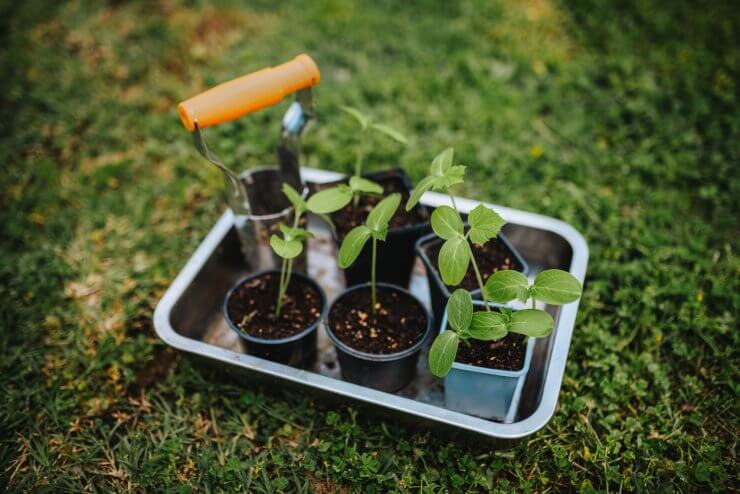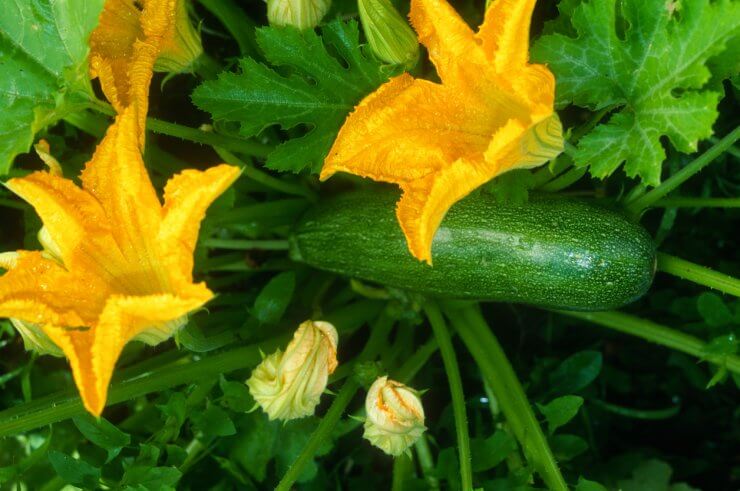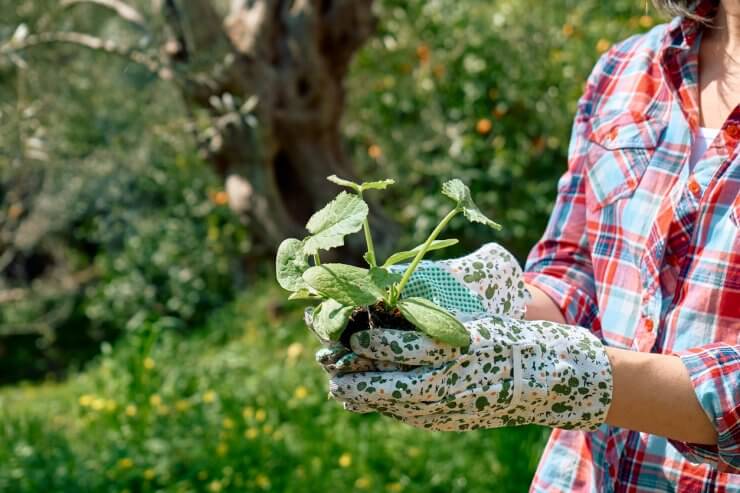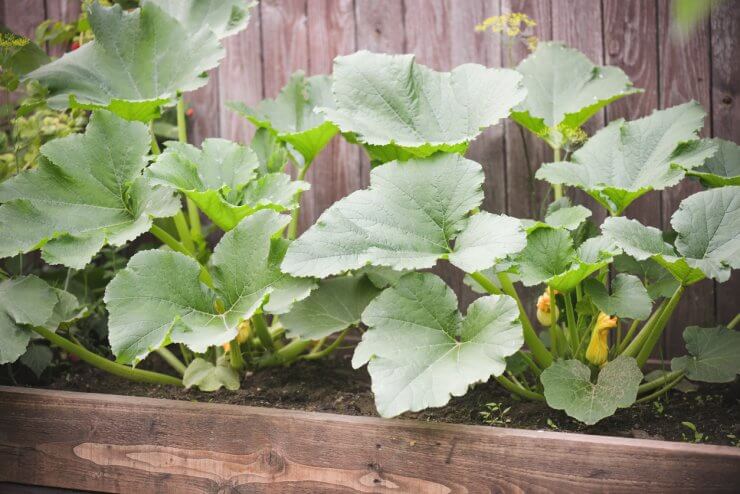
Stop being charged with vegetable harassment, leaving your zucchini on your neighbors’ doorsteps. Sound familiar? Welcome to the Great Zucchini Glut–a phenomenon so common it’s practically a gardening rite of passage.
But what if I told you there’s a way to have just enough zucchini all season long, without triggering that moment when your family collectively groans at the sight of another zucchini bread? Enter succession planting: the gardening equivalent of meal prep, but with more dirt under your fingernails.
The Science Behind the Zucchini Explosion
Before we dive into the solution, let’s appreciate the magnificent problem we’re dealing with. Cucurbita pepo, our beloved zucchini, is a single plant that can produce 6–10 pounds of fruit over its growing season, which sounds reasonable until you realize that translates to roughly 47 zucchini appearing overnight when you’re not looking.
Here’s the botanical plot twist: zucchini plants have what scientists call “indeterminate growth,” meaning they keep producing until something stops them (usually frost, disease, or your sanity). Unlike determinate plants that ripen all at once–looking at you, paste tomatoes–zucchini are the Energizer Bunny of vegetables.
Fun fact that’ll impress absolutely no one at parties: zucchini flowers are actually edible and considered a delicacy in many cuisines. The male flowers (yes, plants have gender drama too) can be harvested without affecting fruit production. It’s like getting a bonus appetizer from your garden, AND harvesting them can reduce a too-big bounty.

The Succession Planting Strategy: Timing is Everything
Succession planting is essentially staggered sowing–think of it as crop rotation’s more organized cousin. Instead of planting all your zucchini seeds at once, you plant smaller amounts every 2–3 weeks throughout the growing season. For most of us, that could be one single seed (or three thinned down to one plant) per planting session.
Here’s where it gets nerdy and wonderful: zucchini plants typically produce heavily for about 4–6 weeks before their productivity starts declining. By overlapping plantings, you create a conveyor belt of peak production that keeps your harvest steady rather than explosive.
The Basic Timeline:
- First planting: After last frost date (we’ll get climate-specific in a moment)
- Second planting: 2–3 weeks after first
- Third planting: 4–6 weeks after first
- Fourth planting: 6–8 weeks after first (adjust based on your first frost date)
Think of it like a relay race, but instead of passing a baton, you’re passing the responsibility of feeding your family’s zucchini addiction.
Climate Zone Considerations
Zone 3–4: The “Holy Cow, Winter Comes Early” Zones
If you’re gardening where winter arrives like an uninvited relative in August, your succession window is shorter but still totally doable. You’ve got roughly 90–100 frost-free days to work with.
Strategy: Plant every 2 weeks maximum, starting about 2 weeks after your last frost date. Your final planting should be no later than 10 weeks before your first expected frost. Yes, I know this requires math. Garden planning always does.
Pro tip: Consider faster-maturing varieties like ‘Eight Ball’ (50 days) or ‘Patio Star’ (45 days) for later plantings. These compact varieties are like the sports cars of the zucchini world–quick and efficient.
Zone 5–6: The “Just Right” Goldilocks Zones
You lucky gardeners have about 120–150 frost-free days, which is prime succession planting territory. You can get away with 4–5 plantings if you’re feeling ambitious.
Strategy: Start 1–2 weeks after last frost, then plant every 3 weeks. This gives you flexibility to skip a planting if life gets in the way (because let’s be honest, sometimes life happens and the seeds stay in the packet).
Zone 7–8: The “Embarrassment of Riches” Zones
With 160–200+ frost-free days, you could theoretically have zucchini from June through October. The question isn’t whether you can, but whether you should. (The answer is: probably not unless you’re planning to corner the local zucchini market.)
Strategy: Plant every 3–4 weeks, but consider taking a mid-summer break when it’s too hot for both you and the plants to be enthusiastic about gardening.
Zone 9–10: The “What Is Winter?” Zones
You practically live in zucchini paradise. You can succession plant almost year-round, though you’ll want to avoid the absolute hottest months when even zucchini throw in the towel.
Strategy: Plant in spring and fall, skip the brutal summer months unless you enjoy gardening in what feels like the surface of Mercury.

How Many Plants Do You Actually Need?
Here’s where tough love comes in: you probably need fewer zucchini plants than you think. One plant per family member is often plenty, assuming said family members actually eat zucchini. If you’re dealing with zucchini-resistant teenagers, adjust accordingly.
For succession planting, try this formula:
- Family of 2–3: Plant 1 plant every round
- Family of 4–5: Plant 2 plants every round
- Family of 6+: Plant 3 plants every round, or consider therapy for your apparent zucchini addiction
Remember, zucchini plants are like rabbits–highly productive with seemingly unlimited potential. A little restraint goes a long way.
Zucchini Variety Selection
Not all zucchini are created equal, and succession planting gives you the perfect excuse to experiment with different varieties. It’s like creating a seasonal playlist, but with vegetables.
Early Season (Cool Weather Champions):
- ‘Black Beauty’: The reliable starter that never lets you down
- ‘Costata Romanesco’: Italian heirloom with ridged skin and nutty flavor
- ‘Patio Star’: Compact variety perfect for container succession planting
Mid-Season (The Workhorses):
- ‘Dark Green’: Classic variety that produces reliably
- ‘Golden Glory’: Yellow variety that adds visual interest to your harvest
- ‘Raven’: Dark green with excellent disease resistance
Late Season (The Finishers):
- ‘Eight Ball’: Round fruit that matures quickly
- ‘Spacemiser’: Compact plants for late-season container growing
- ‘Ronde de Nice’: French heirloom perfect for stuffing
The Graduate-Level Strategies
Once you’ve mastered basic succession planting, you can level up with these advanced techniques:
Intercropping: Plant quick-growing crops like lettuce or radishes between your zucchini succession rounds. By the time the zucchini need the space, you’ve harvested your salad crops.
Succession by variety maturity: Instead of planting the same variety every round, use early, mid, and late-season varieties to naturally stagger your harvest.
Temperature manipulation: Use row covers or cold frames to extend your succession planting window. You can start earlier in spring and plant later into fall.
The replacement strategy: Instead of predetermined planting dates, plant a new round when your current plants start showing signs of decline.

Troubleshooting Common Succession Snafus
- Problem: Your second planting failed to germinate
- Solution: Check soil temperature (zucchini seeds need 60°F minimum) and soil moisture. Maybe the garden spirits are telling you to stick with your current production level.
- Problem: All your plants are producing at once anyway
- Solution: You might be planting too close together timing-wise, or you chose varieties with similar maturity dates. Adjust your intervals and diversify your variety selection.
- Problem: Later plantings are struggling in summer heat
- Solution: Provide afternoon shade, increase watering frequency, and consider heat-tolerant varieties for mid-summer plantings.
- Problem: You’re still drowning in zucchini
- Solution: Embrace your role as the neighborhood zucchini distributor. Leave them in unlocked cars. Hide them in mailboxes. Sometimes you just have to accept your destiny.
Succession planting for zucchini isn’t just about avoiding the dreaded glut–it’s about becoming a more thoughtful, strategic gardener. Sure, it requires a bit more planning than the “plant everything Memorial Day weekend and hope for the best” approach. But the payoff is huge: fresh zucchini all season long, no guilt about wasted produce, and the smug satisfaction of being the neighbor who always has just enough to share without overwhelming everyone.
Plus, you’ll never again experience that moment of standing in your kitchen at 7 AM, staring at a counter full of zucchini and wondering if you can legally classify them as a controlled substance.
So grab your calendar, plan your succession schedule, and get ready to become the zucchini whisperer your neighborhood never knew it needed. Your future self–and your neighbors–will thank you. Happy succession planting, and may your zucchini always be just the right size!
Want to learn more about growing zucchini? With The Zucchini Gardening Guide, you get everything you need to know about growing and enjoying this prolific vegetable. From the best growing zones for cultivating zucchini and specific advice about soil requirements and fertilizer to watering techniques and details about avoiding diseases and pests. Plus, easy-to-make and delicious recipes—get it all in The Zucchini Gardening Guide right now!


 Previous
Previous

